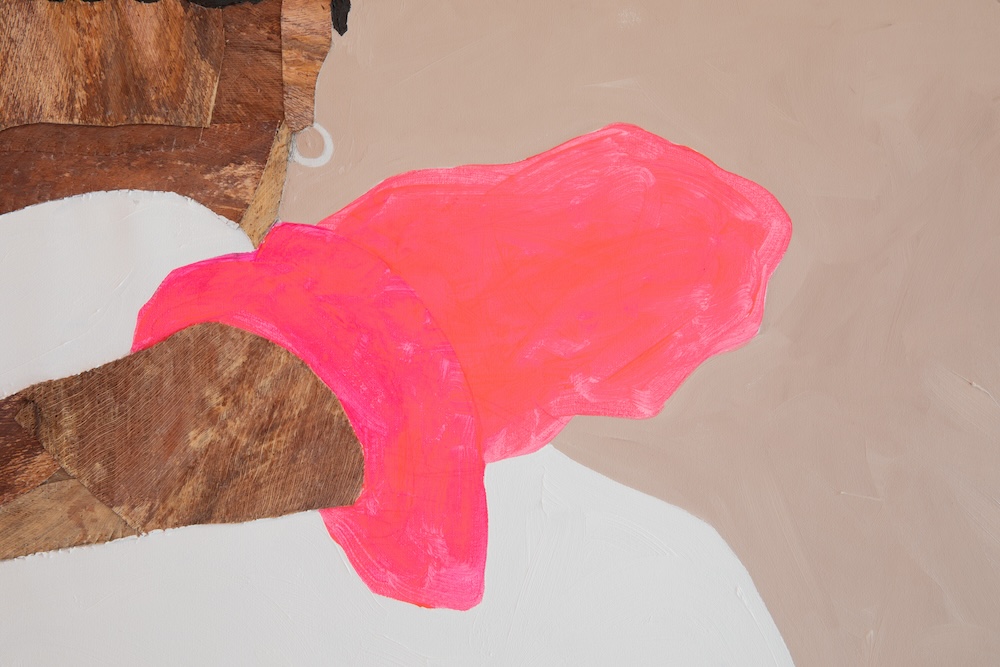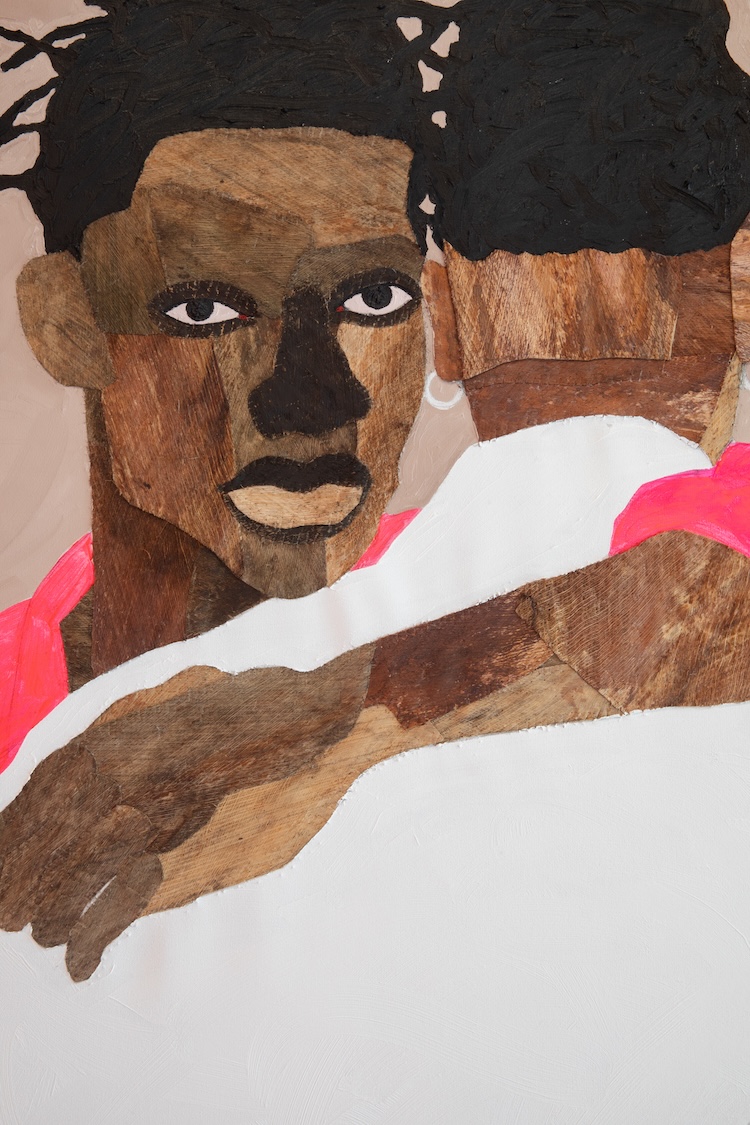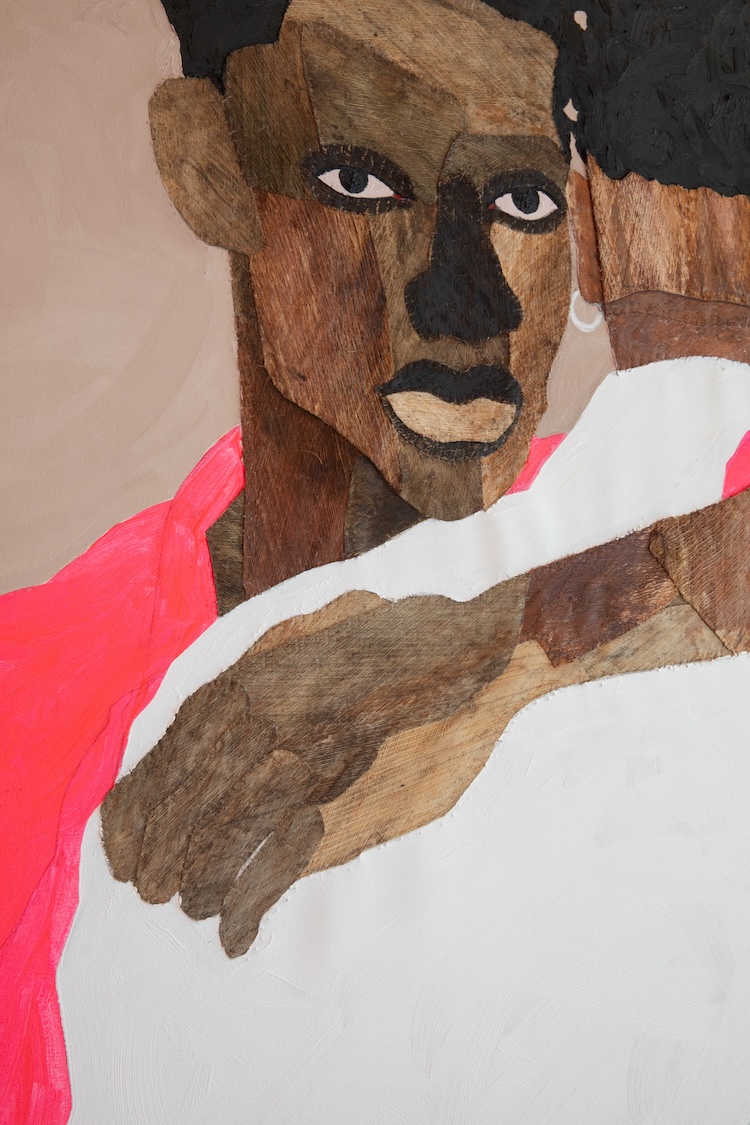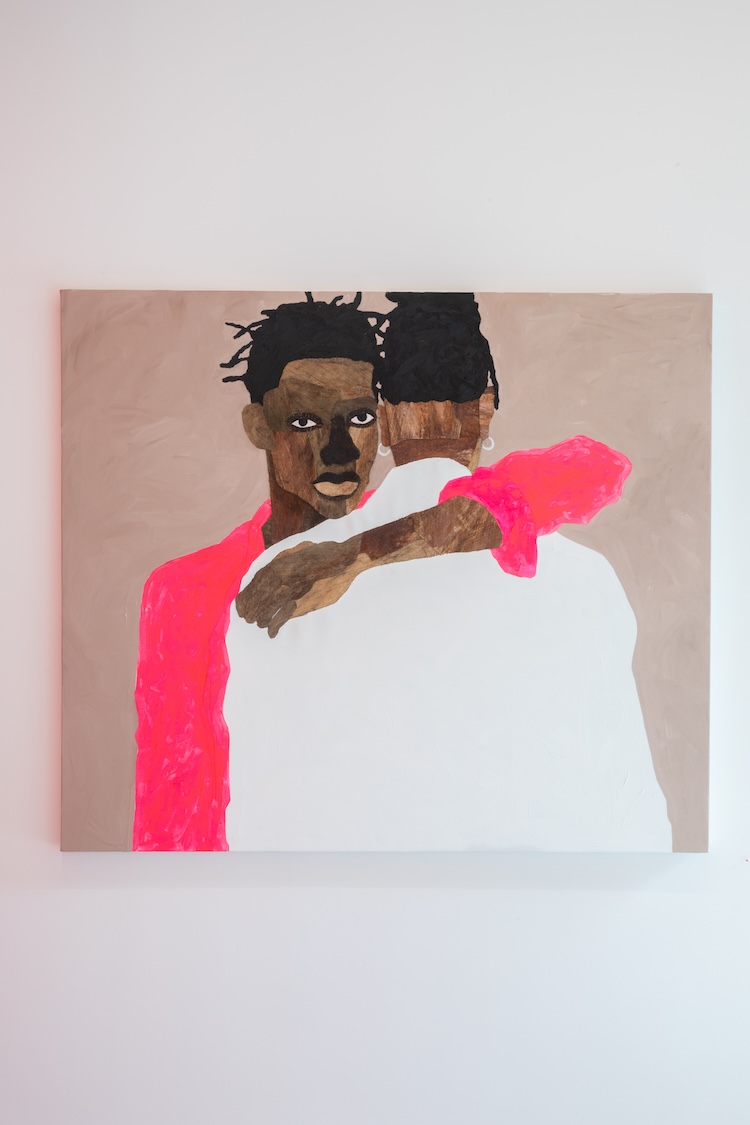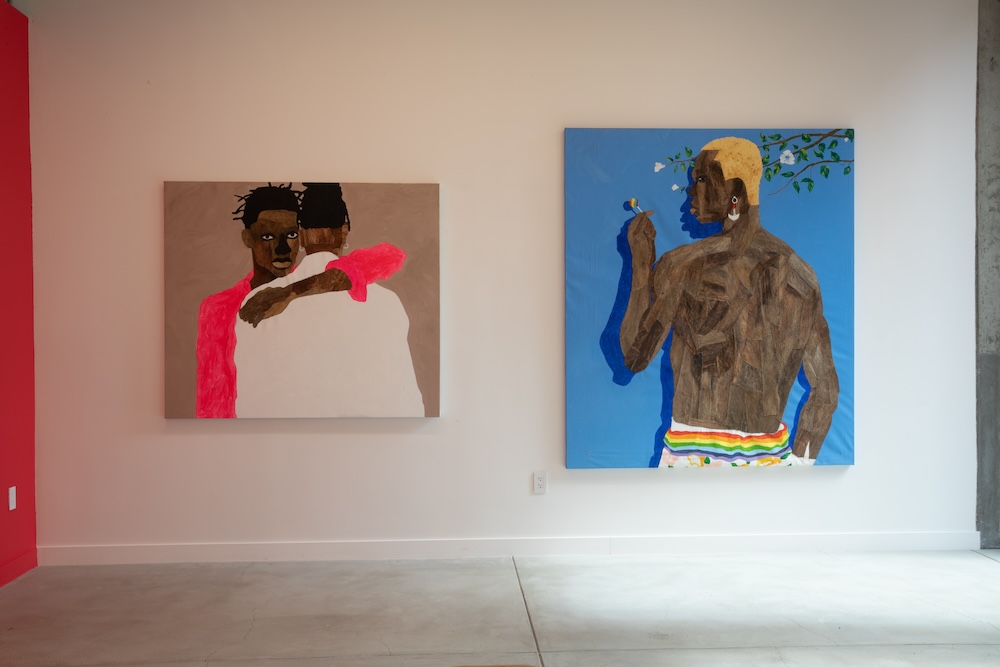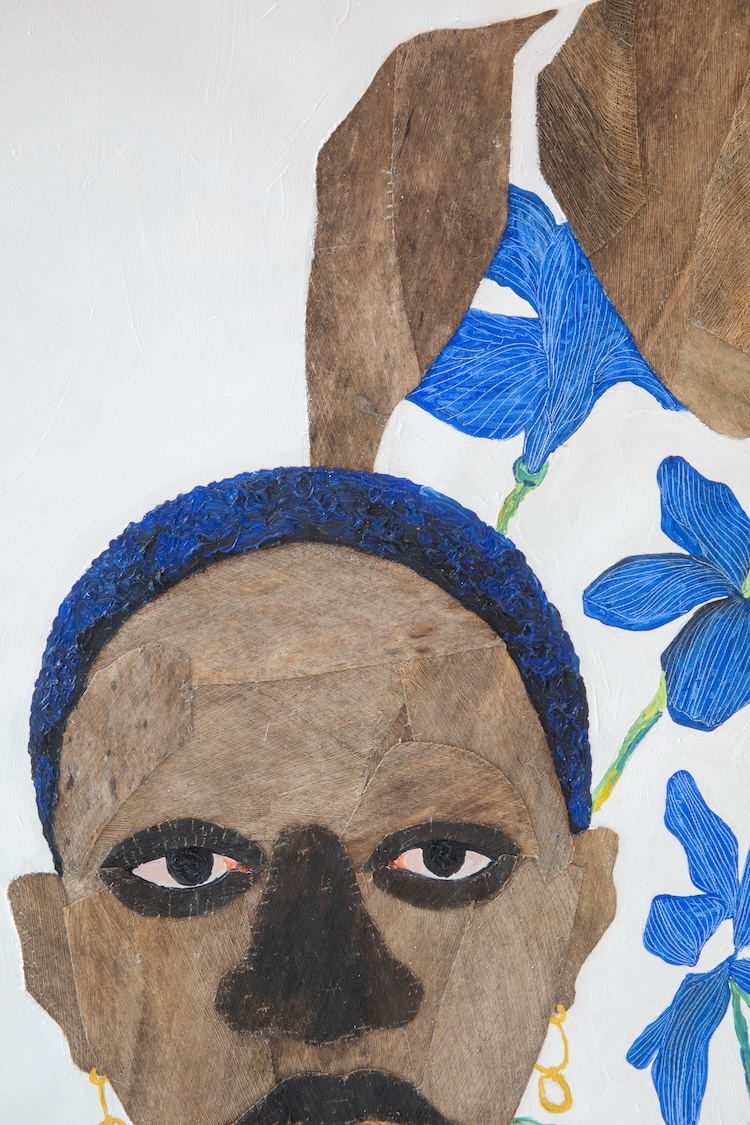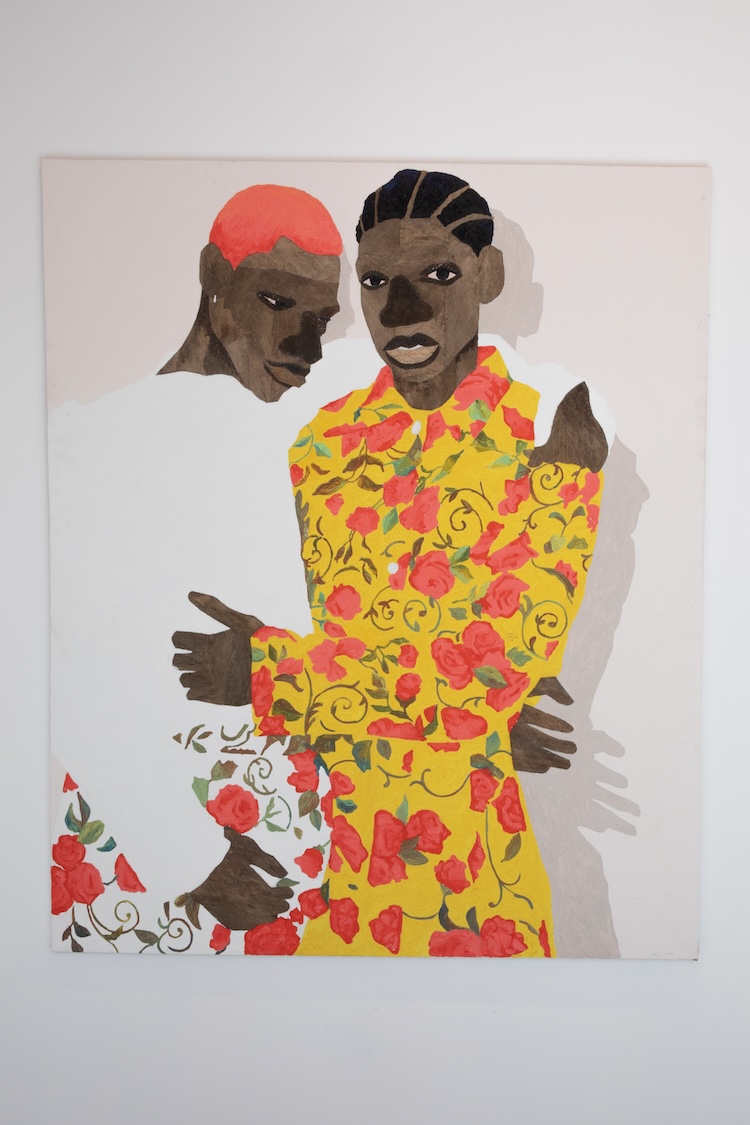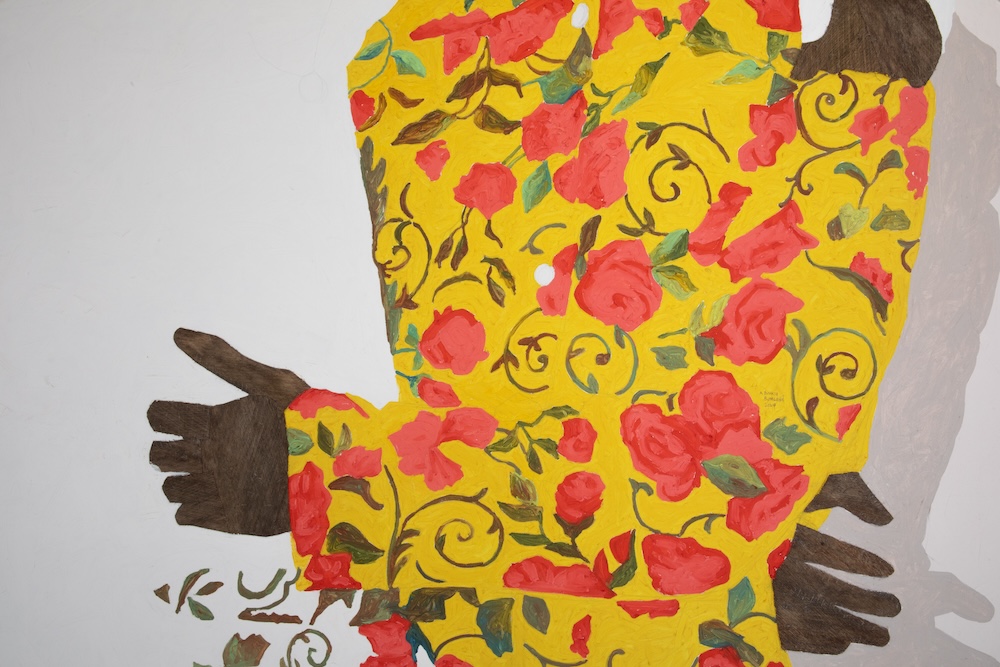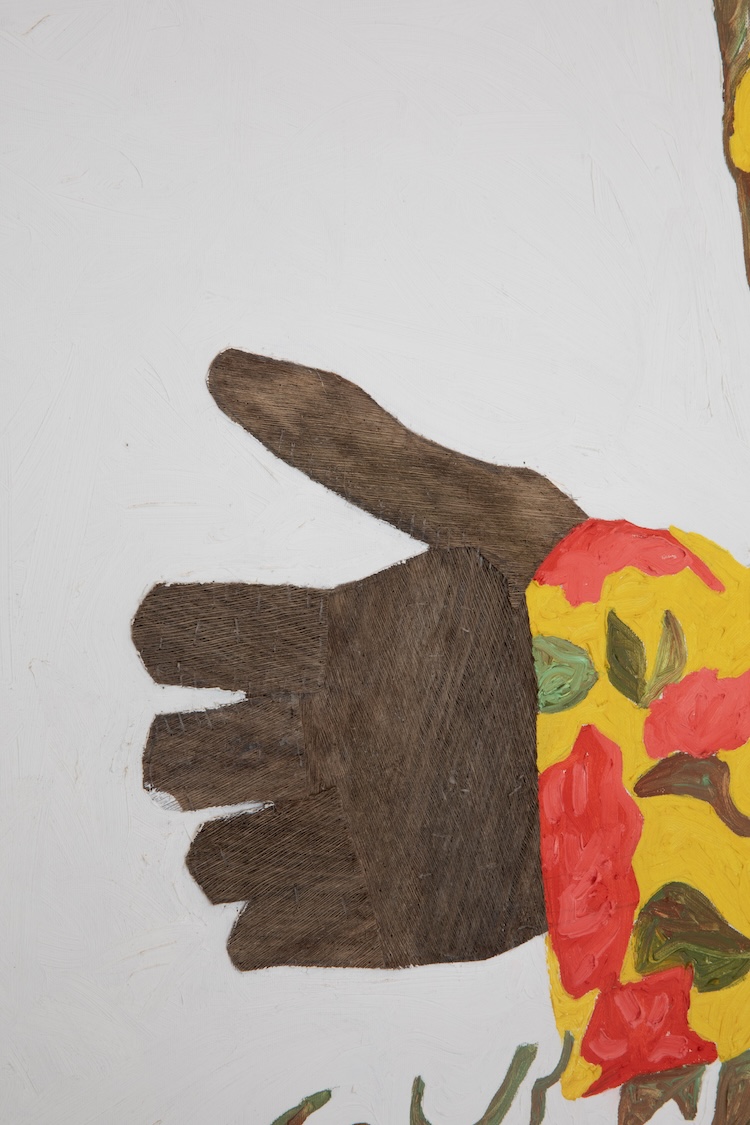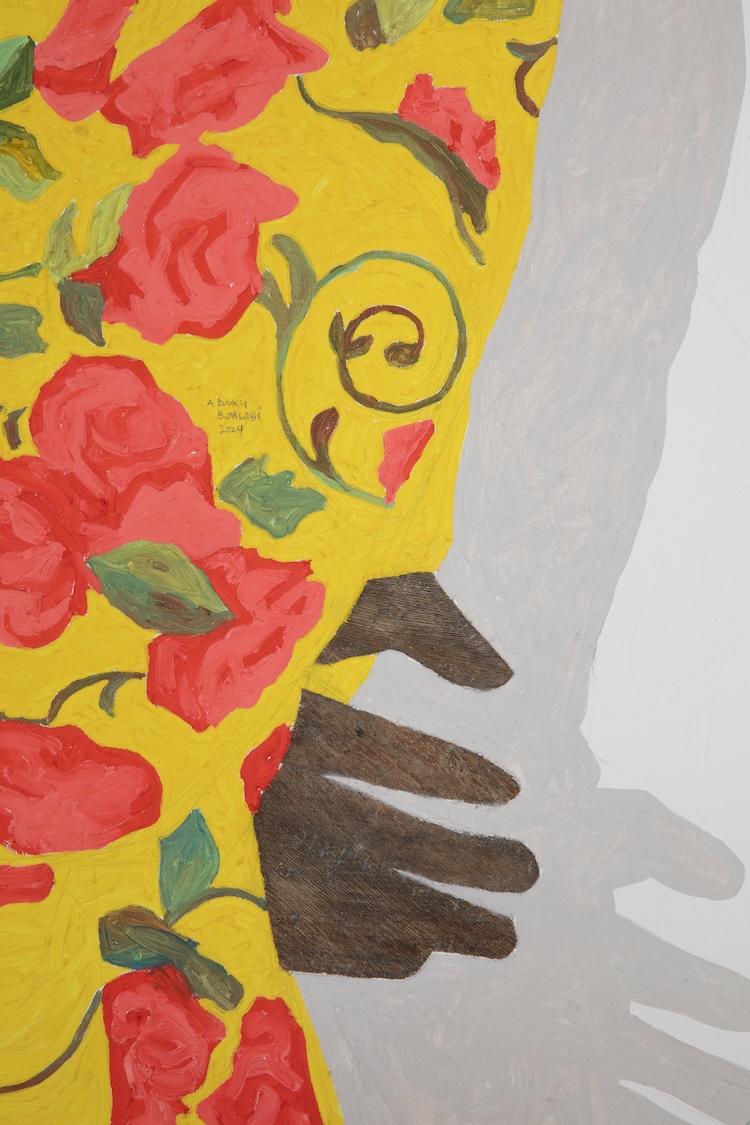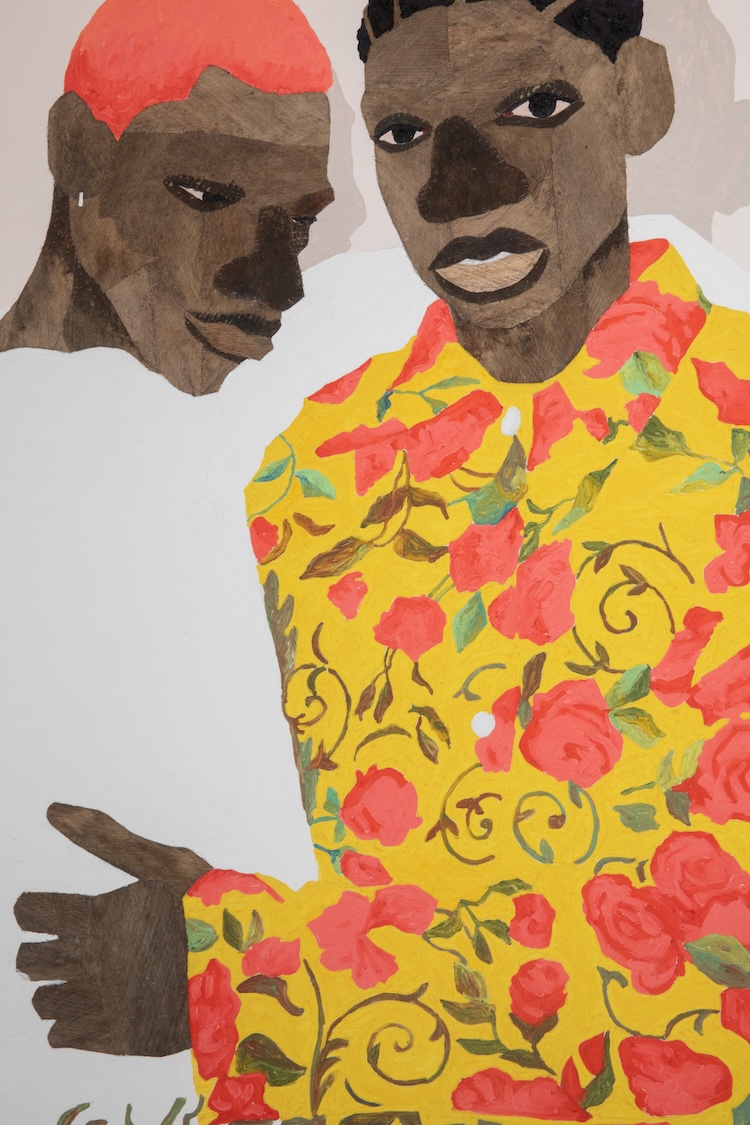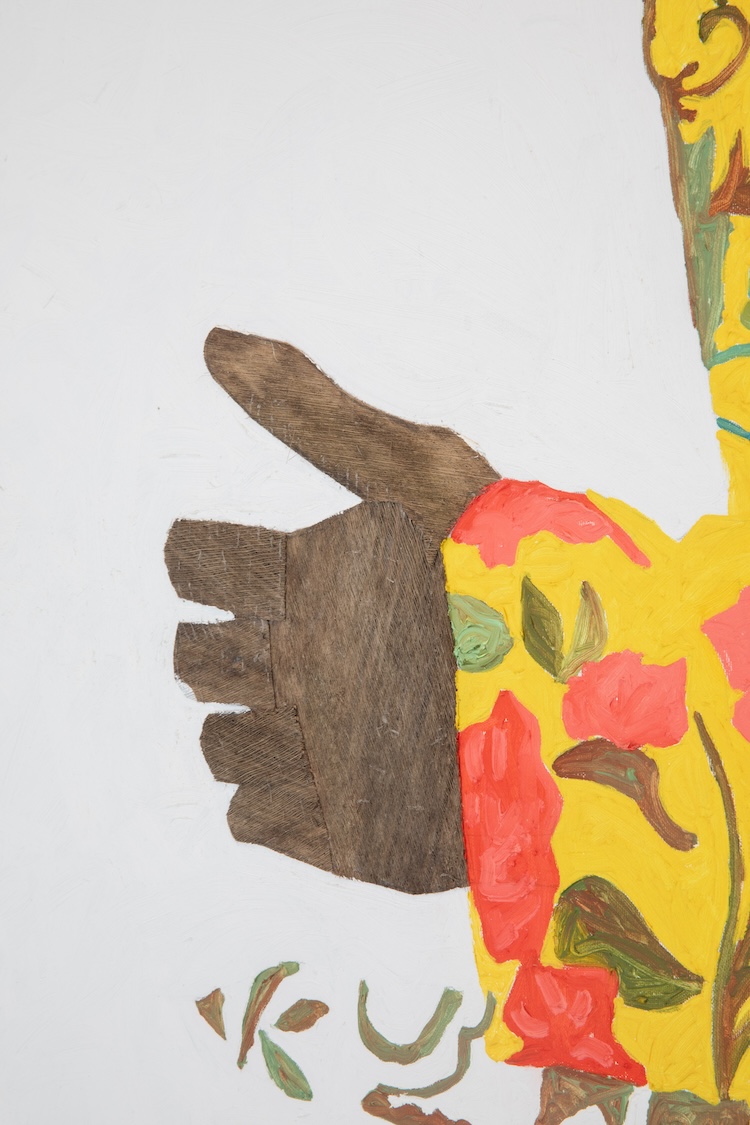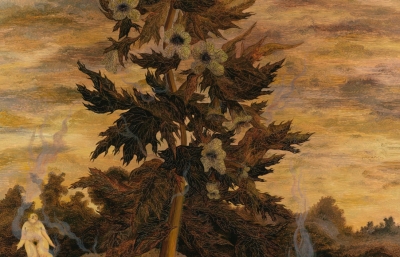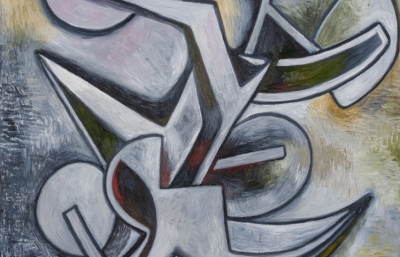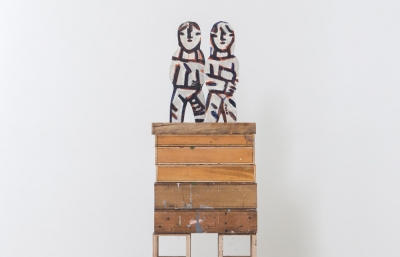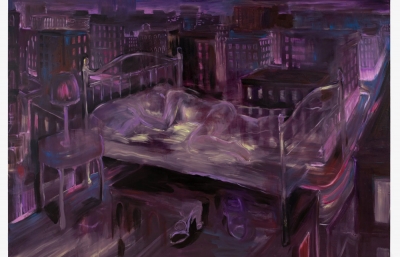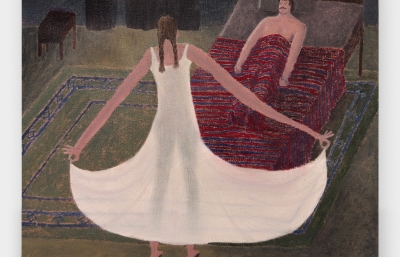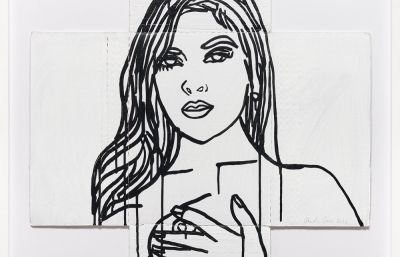Last year, Jonathan Carver Moore opened his eponymous gallery in San Francisco to much excitement. In the midst of conversations around San Francisco’s “downfall,” Moore doubled down on his love for the city, opening a new gallery in the heart of downtown specializing in artists who are BIPOC, LGBTQ+ and women. Now a year later, Moore has held numerous exhibitions that have built a community on the premise that art is for everyone. Most recently the beloved gallerist has incorporated an artist-in-residency program, with the inaugural artist Aplerh-Doku Borlabi, (most known as Doku). Borlabi’s paintings utilize coconut sheath for the skin and characteristics of his subjects, employing the setting of beaches from home (where he often sketches) to literally encapsulate the beauty of brown skin.
The works from this residency are on view now featuring eight pieces created during Borlabi’s time, blending subjects the artist captured at his home in Ghana with the energy of people he encountered walking the streets of San Francisco. Juxtapoz talked to Moore and Borlabi about the residency, the artworks on view, and why San Francisco is such a special place.
Shaquille Heath: When did the residency begin and how long have you been working on these pieces?
Jonathan Carver Moore: Doku was a part of a group show we had at the gallery last year titled Black as an Experience, Not as a Color. I had this idea last April and when that show concluded we were talking about what we could do next. We created somewhat of a throughway with one another–a connecting point–between artists of Africa and wanting to do that with artists in Ghana specifically. And Doku and I just hit it off. We were in conversation for a while about it and were just trying to figure out the timing, and logistically how it would work.
I also wanted to make sure that Doku felt comfortable in being in the space–not just creating, but also a space to live in. It's actually amazing because I spoke to my landlord who owns this building–she and I have been talking about what to do with the vacant spaces she has that are near the gallery. I said I had this idea, and she was on board with it. After Christmas I sat down with Doku and his manager and talked about the timing, and within three weeks, we figured out how to do this residency. Doku has a 2600 square foot space downstairs, and lives in a unit above the building. He got here the weekend of February 8.
Oh my gosh! So you've created all of these works in just that small amount of time?
Aplerh-Doku Borlabi: Yeah! I shipped some of them from Ghana to San Francisco. But I did a lot here. The energy is there, so why not produce more?
Doku, what were some of the conversations that you were having with Jonathan when you began speaking about a residency?
ADB: Initially, with the first conversation that we had I could see the kind of energy that Jonathan had put into this. So yes, of course everybody as an artist also wants a career, and wants to get someplace in life, but I think from the beginning of the journey, I matched the kind of energy that he put into the first show. I realized that he’s the kind of person who is always thinking of the gallery, and I felt like, let me work with you because when someone puts that kind of energy into the projects, you get a better experience.
There’s such an amazing surge of artists coming out of Ghana right now–like Amoako Boafo and Otis Kwame Kye Quiacoe. You all carry such a lovely energy, and come from similar teachings. What are some of those experiences from home that you're carrying into this residency and show?
ADB: Yeah, Otis is a mate of mine. Him and a few others, we’re all in the same class. Yeah, initially for me coming to San Francisco I didn't know much about the city. But I know much more about my community. So most of the time back home I’d go to the beach, and there's a kind of vibe at the beach. I relate to those people and with the kind of energy that they have. Because most of the time you will normally go to the beach to relax, to have fresh air and party. But I normally go to the beach to do my sketches and take photos of my works. I thought if I was able to show this kind of work in San Francisco, it could be updated. So I take layers. I came to San Francisco and I realized that there were a lot of tents on the streets. Initially from the beginning, I felt maybe scared. But in the process of being with them for some time, I got to learn their goodness and to play a role.
San Francisco is definitely its own kind of city and I think it is interesting for people when they actually get to spend a lot of time there. Can you tell me about the body of work you created here?
ADB: Yeah the works are people that I know from Ghana. I think as I said earlier, most of the time I normally go to the beach to take sketches, and in my kind of community, every Sunday we have parties on the beach. Every person that comes to the beach thinks, “Let me put on my best clothes to show off.” I think that shows a kind of boldness, because when people put on their best, they have a confidence and power. I tell people, art is something that comes within, before you put it on canvas. Because if you don't have the imagination, you can’t really transfer those things into reality. For people I really liked, I thought, I like that energy. I like the kind of contrast of their color skin with their clothing color. So I took some photos for my work, where I wanted to talk more about my community, and about the place that I live.
I'm wondering if it turned out how you had first imagined when you and Jonathan started early conversations? Did anything change during your residency?
ADB: I think from the beginning, I had a couple of ideas to put on the canvas. But the moment I go to San Francisco, I think from the first day that I arrived, I walked on the streets and realized that I had to change the narrative. I started doing the body of work, whatever I wanted to do, but in some of the works that I did, there’s a particular color that is dominant. The color pink is in almost all the works. From the beginning, I don't think I had it in mind, I just wanted to use a particular color for a couple of works. But coming to San Francisco I realized that I have to be the kind of person that is going to be bold. For the people in San Francisco, I chose this color to represent boldness. It changed the kind of narrative in the body of work.
How do you source coconut sheath to San Francisco?!
JCM: Doku–you should share about the whole experience. Because Shaq, it's a year long process to make that coconut sheath!
ADB: Yeah I go through a whole process–we normally go to some of the farms. At the beginning of my career, I’d normally go to the beach because there's a lot of coconut trees out in my area. Each time we go to the beach we’d gather all of the materials. And we have a warehouse, and I treat the materials there. I also bleach some of them with dye. It takes about a year to create and get a product. From there, we bring them to the storage studio space before we go to use it to work. For San Francisco, I packaged up all the materials to send ahead.
Initially building the materials, I started with two people. And I think right now I have like seven people. We are working together because I also wanted to create employment for people in our community, because getting the materials… I myself cannot do all the things. 
Wow! So you really have to prepare far in advance when you know you’ll have an exhibition, so that you can get the works ready. And you’re doing it all with your community! That’s amazing. Can you tell me a bit more about the show's title?
JCM: Doku and I sat together on Sunday for a few hours, and I recorded our conversation, and the word that kept coming up in our conversation was the word “Bold”.” Doku had taken the photos he wanted to reference in Ghana, but then also from seeing the people in San Francisco in the streets, and it's the amalgamation of all of his experiences between there and here combined. And I've asked him, “What do you mean you're talking to people on the streets?” He was talking to people like you and I who are walking around San Francisco, but also the people that live on the streets–Doku said they’re so confident in who they are that it just resonated with him. People who just walk up to him and ask them a question, and then Doku would sit with them and talk for a while about their experience of being in San Francisco and what it's like.
I asked him specifically about that pink color because I've never seen him use that color. And he said he decided to use pink because pink is what he felt represented all of the bold people who were walking up to him. He loved their self assurance. I just thought it was a beautiful story considering our geographical differences, but yet there's so many similarities and we often don't think about those aspects of our lives in totality.
BOLD is on view now at Jonathan Carver Moore gallery in San Francisco through June 8, 2024

